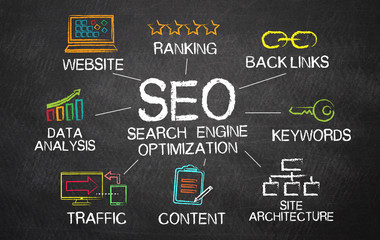A Guide to SEO Services and their Impact
Naples Search Engine Optimization is a digital marketing strategy that focuses on improving a website’s visibility in search engines like Google. It uses a variety of tactics and techniques to ensure that search engines recognize your content as the best answer to a user’s query.
It is especially important to rank well on SERPs that include your brand name (branded queries). This is where SEO really starts to matter.
Keywords are the foundation of a good SEO strategy. They help search engines understand the content of a webpage and determine its relevance to user queries. Using keywords effectively can improve your website’s visibility, attract targeted traffic, and increase conversions and revenue.
The process of finding and selecting keywords involves analyzing your audience’s search behavior and understanding what they want. To do this, you need to create a detailed buyer persona. Then, you can use this information to develop your content strategy and identify potential keywords. When choosing keywords, consider search volume, relevancy, and competition. Search volume refers to the number of people searching for a particular term; relevancy refers to how closely a keyword matches the topic of a search; and competition refers to how hard it is to rank for a specific keyword.
Choosing the right keywords is vital for SEO success. It is important to ensure that the keywords you choose are relevant and accurate, as well as spelled correctly. Additionally, it is critical to include these words in the right places on your website. For example, if you are an online lingerie store, it is best to target the keyword “new bras.” However, if you are a local flower shop, it’s more beneficial to use “local flowers.”
In addition to keywords, search engine optimization also involves other aspects of your website and its content. This includes on-page and off-page optimization, as well as link building and social media marketing. On-page optimization involves ensuring that your content is relevant to the keywords you’re targeting, and it involves optimising the title tags, meta descriptions, and copywriting of each page on your website. Off-page optimization, on the other hand, involves optimising your links and other offsite assets to drive more relevant traffic to your website.
Ultimately, SEO is about building authority and trust with your audience, and it’s essential to monitor the effectiveness of your keywords over time. This will allow you to make necessary adjustments to your strategies, and increase your chances of ranking higher in search results. Consistently appearing in search results builds credibility and trust with your audience, and can lead to long-term brand loyalty.
On-page optimization
On-page optimization is the process of improving a website’s content to increase search engine rankings. It involves changing the structure of pages to make them more relevant to specific keywords and user queries. It is also important to use proper formatting and headings to improve readability. The goal of on-page optimization is to improve the user experience and increase organic search traffic.
SEO is a continuous process, and new trends are emerging constantly. As Google gets better at understanding new types of content, it’s crucial to stay on top of the latest SEO best practices. These best practices include creating quality, relevant content, using the right keywords, and optimizing for mobile and voice searches.
Title tags and meta descriptions are important for on-page SEO, but they should be limited to 150-160 characters to avoid getting truncated in search results. They should also be optimized for target keywords and provide an overview of what users will find on the page. Headings are another important aspect of on-page SEO, as they help users navigate the page and find the information they’re looking for.
Another element of on-page optimization is making sure that your web pages are mobile-friendly and accessible to all users. This includes ensuring that your pages load quickly on both desktop and mobile devices and including relevant alt text for images. On-page optimization can also include reducing the number of redirects and minimising code to reduce the amount of energy needed to load your site.
The on-page optimization process should be completed before focusing on off-page SEO, as it will improve the effectiveness of your other marketing activities. In addition, on-page optimization is a crucial first step to achieving higher rankings in the long run. Ultimately, on-page optimization is the best way to ensure that your website is visible and easily found by potential customers. Moreover, it is an efficient and cost-effective method of increasing your brand’s visibility and generating more leads.
Off-page optimization
Unlike on-page SEO, off-page optimization involves activities outside of your website that improve your search engine rankings. This includes link-building, social media strategy and marketing, and online directory listings. It also encompasses brand mentions and reviews. Developing these elements is key to growing your visibility and establishing your authority and reputation as a business. While off-page SEO isn’t as easy as on-page SEO, it can be equally rewarding.
Off-page SEO techniques vary, but they all focus on building your website’s trustworthiness and popularity. These activities can include creating guest posts for popular blogs, contributing to roundup posts, and leveraging your expertise as a podcast guest or signing up for Help a Reporter Out (HARO). In addition to building links and increasing your website’s domain authority, these tactics boost visibility and establish credibility through third-party endorsements.
In addition to these off-page SEO tactics, it’s important to maintain a strong on-page SEO strategy. For example, your meta descriptions and title tags should contain relevant keywords that align with user search queries. Moreover, your content should be well-structured and free from grammatical errors. This will ensure that search engines index your pages correctly.
Another off-page SEO tactic is to optimize your Google My Business listing by adhering to guidelines and ensuring that your contact information is accurate and up-to-date. This will help your business rank higher in the local search results and drive more traffic to your site. Other off-page SEO strategies include generating positive reviews and engaging on social media.
Developing an effective Search Engine Optimization strategy requires consistent effort and an ability to adjust tactics as necessary. While it may seem difficult to balance on-page and off-page SEO, they are deeply intertwined. In fact, effective on-page SEO can amplify off-page efforts and help your business rank higher in search engine results. However, it’s crucial to start small and prioritize the tactics that work best for your business. In addition, don’t be afraid to experiment with different tactics and learn from your mistakes. In the end, a harmonious blend of on-page and off-page SEO will yield the best results.
Link building
Despite rumors that link building is dead, this tactic remains an important aspect of SEO. During the process, marketers acquire links from other websites to their own in order to boost their ranking on search engine results pages (SERPs). Links are a crucial component of Google’s algorithm and they indicate to search engines that your website is a good resource for a particular topic. However, backlinks are only one of the many factors that influence a page’s rank, and it is essential to use this metric with caution.
It is also important to note that link-building has evolved over the years. Many of the old link-building tactics, such as directory submissions and article exchanges, have become obsolete. It is now more important to focus on building quality content and establishing relationships with high-quality websites in your niche. Using keyword research tools can help you identify relevant keywords and target sites that are most likely to link back to yours.
In addition, it is imperative to avoid black hat link-building practices. These methods can result in penalties from search engines and harm your reputation. Examples of black hat techniques include indiscriminate link buying, bulk link selling, and spammy guest blogging. These tactics are against Google’s guidelines and can negatively impact your site’s rankings.
In the era of SEO 2.0, it’s more important than ever to build meaningful links that provide value to users. To do this, marketers should create a list of objectives and measure their progress regularly. These goals should be tied to organizational goals, such as increasing organic traffic to drive sales. Setting these objectives will help marketers stay on track and avoid wasting time on tactics that won’t have a significant impact on their bottom line.

